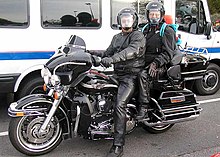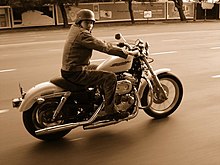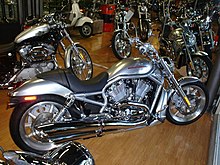Turbo:Why did you build an electric supercharger?
Thomas KnighT: The idea of a serious electric supercharger has always intrigued me. There are no parasitic losses, the unit can be mounted anywhere in the car and it can be run in any car; it's not application specific.
Thomas KnighT: The idea of a serious electric supercharger has always intrigued me. There are no parasitic losses, the unit can be mounted anywhere in the car and it can be run in any car; it's not application specific.
T: When did you start on your design?
TK: I built my first electric supercharger in 1978. I was working at Turbo Tech in Miami and used an Airesearch T11 airplane turbo combined with an automotive starter. I ground the turbine wheel blades off and fit a small multi-groove V-belt pulley on the shaft with some ball bearings. It worked great on my VW beetle. I mounted it where the back seat was and ran a duct through the firewall to the carb top. An extra car battery in series with the stock battery (24v) made 6 to 7 psi at low rpm, then tapered to 3.5 psi at high rpm. I threw V-belts every 30 seconds or so.
T: Have you designed different types of electric superchargers?
TK: I've built more than 100 different designs with varying success, but the same problem always occurred--not enough boost to make me happy. Four psi is better than nothing, but my goal was 15 psi.
TK: I built my first electric supercharger in 1978. I was working at Turbo Tech in Miami and used an Airesearch T11 airplane turbo combined with an automotive starter. I ground the turbine wheel blades off and fit a small multi-groove V-belt pulley on the shaft with some ball bearings. It worked great on my VW beetle. I mounted it where the back seat was and ran a duct through the firewall to the carb top. An extra car battery in series with the stock battery (24v) made 6 to 7 psi at low rpm, then tapered to 3.5 psi at high rpm. I threw V-belts every 30 seconds or so.
T: Have you designed different types of electric superchargers?
TK: I've built more than 100 different designs with varying success, but the same problem always occurred--not enough boost to make me happy. Four psi is better than nothing, but my goal was 15 psi.
T: When did you develop the idea of using three motors?
TK: About 10 years ago I developed a program to determine the horsepower requirements for electric compressors. It was a very difficult program and it took me a long time to get the parameters correct. I found that flowing 780cfm at 15 psi required 80 to 100 hp. I went smaller on engine size and lowered boost requirements until I reached 450cfm at 8 psi, which required 18 to 22 hp, so I looked for a 20-hp dc motor. All I found were 50-plus-pound motors, which were too large to use in my intended application. Three years ago I realized if I used multiple motors, I could get to the 20-hp mark.
TK: About 10 years ago I developed a program to determine the horsepower requirements for electric compressors. It was a very difficult program and it took me a long time to get the parameters correct. I found that flowing 780cfm at 15 psi required 80 to 100 hp. I went smaller on engine size and lowered boost requirements until I reached 450cfm at 8 psi, which required 18 to 22 hp, so I looked for a 20-hp dc motor. All I found were 50-plus-pound motors, which were too large to use in my intended application. Three years ago I realized if I used multiple motors, I could get to the 20-hp mark.
T: Why a Roots-type supercharger?
TK: I designed many different models and applied for the patents. I also have patents pending on screw, roots, centrifugal and sliding vane-type electric superchargers. The centrifugal design is in the works, an...
TK: I designed many different models and applied for the patents. I also have patents pending on screw, roots, centrifugal and sliding vane-type electric superchargers. The centrifugal design is in the works, an...

Read more: http://www.turbomagazine.com/tech/0406tur_knight_turbo_electric_supercharger/#ixzz21vPt8Nqy




















